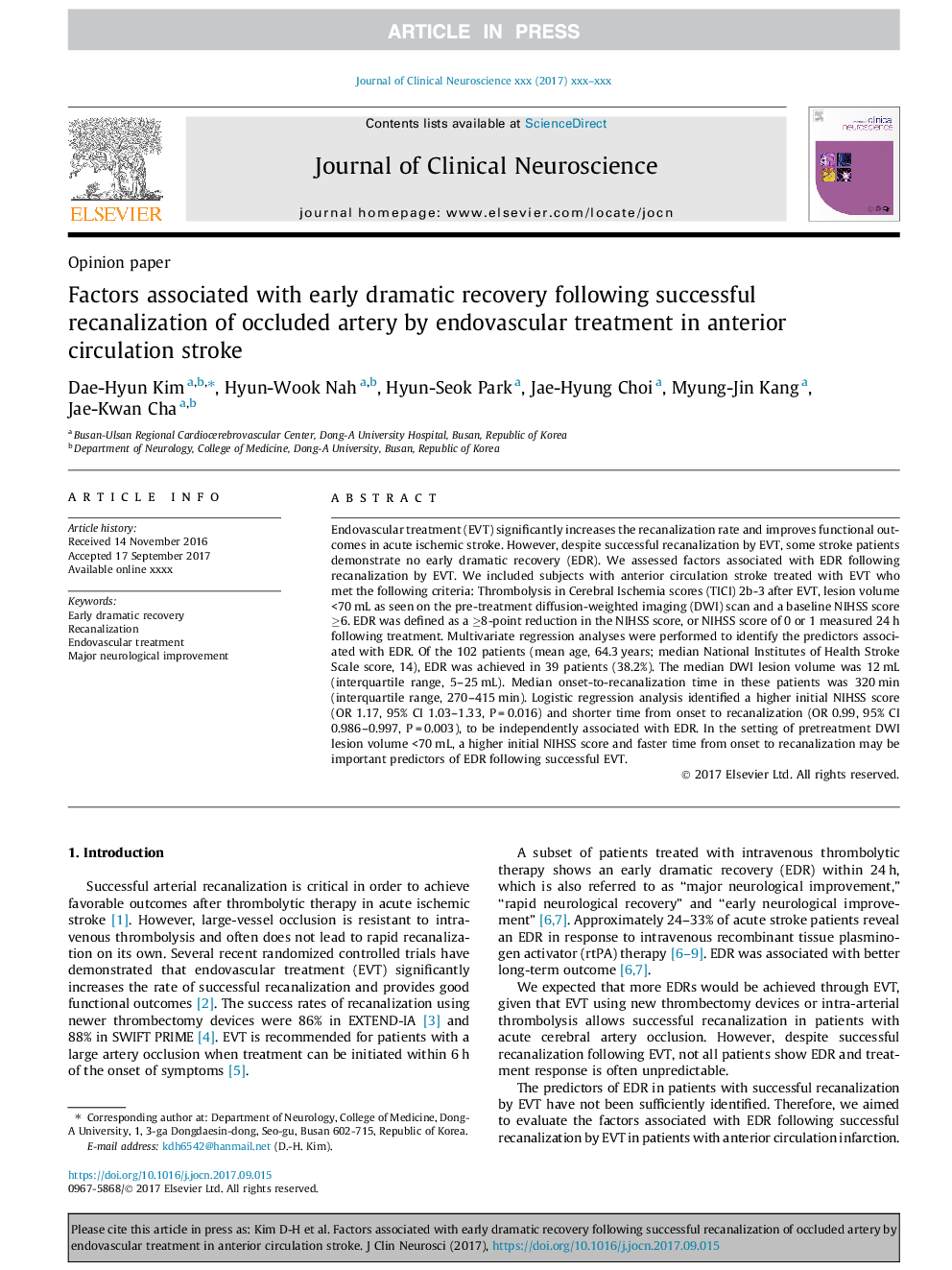| Article ID | Journal | Published Year | Pages | File Type |
|---|---|---|---|---|
| 8685494 | Journal of Clinical Neuroscience | 2017 | 5 Pages |
Abstract
Endovascular treatment (EVT) significantly increases the recanalization rate and improves functional outcomes in acute ischemic stroke. However, despite successful recanalization by EVT, some stroke patients demonstrate no early dramatic recovery (EDR). We assessed factors associated with EDR following recanalization by EVT. We included subjects with anterior circulation stroke treated with EVT who met the following criteria: Thrombolysis in Cerebral Ischemia scores (TICI) 2b-3 after EVT, lesion volume <70 mL as seen on the pre-treatment diffusion-weighted imaging (DWI) scan and a baseline NIHSS score â¥6. EDR was defined as a â¥8-point reduction in the NIHSS score, or NIHSS score of 0 or 1 measured 24 h following treatment. Multivariate regression analyses were performed to identify the predictors associated with EDR. Of the 102 patients (mean age, 64.3 years; median National Institutes of Health Stroke Scale score, 14), EDR was achieved in 39 patients (38.2%). The median DWI lesion volume was 12 mL (interquartile range, 5-25 mL). Median onset-to-recanalization time in these patients was 320 min (interquartile range, 270-415 min). Logistic regression analysis identified a higher initial NIHSS score (OR 1.17, 95% CI 1.03-1.33, P = 0.016) and shorter time from onset to recanalization (OR 0.99, 95% CI 0.986-0.997, P = 0.003), to be independently associated with EDR. In the setting of pretreatment DWI lesion volume <70 mL, a higher initial NIHSS score and faster time from onset to recanalization may be important predictors of EDR following successful EVT.
Keywords
Related Topics
Life Sciences
Neuroscience
Neurology
Authors
Dae-Hyun Kim, Hyun-Wook Nah, Hyun-Seok Park, Jae-Hyung Choi, Myung-Jin Kang, Jae-Kwan Cha,
